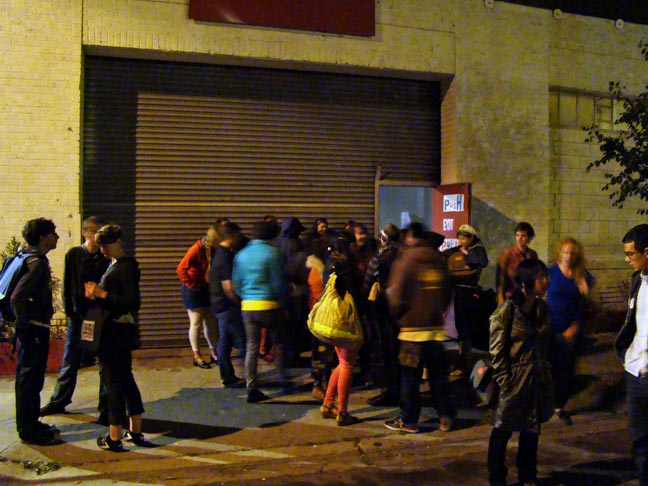In response to a questionnaire about art and the climate crisis circulated by the Brooklyn Rail, Gene Moreno suggests that in the age of the Anthropocene, alternative art spaces need to be reframed. Here’s Moreno’s response in full:
Alternative spaces are inseparable from social history. They’ve always sought to establish new ways of producing and circulating art beyond the limited options that capitalist relations afford cultural production, even if certain spaces have at one time or another worked against this very mission, becoming sad way stations between educational institution or underground scene and the market. For a long time, however, the abstractions that alternative spaces as a certain kind of entity stood against were clear: commodity form, exchange relation, etc. But something has changed. A new demand is being put to spaces and practices that want to function outside the hegemonic space of the dominant culture. While there is a need to continue challenging the old sociocultural abstractions, as these are either reinforced or reconstituted into forms that penetrate deeper into the social field (and our subjectivities) by capital’s shift from manufacturing to finance, we now also face a maligned biosphere whose newly emerging effects impinge on all aspects of human experience. That is to say that the barrier—even if artificially established and exaggerated by our anthropocentrism—that once separated social history and natural history has collapsed.
A growing understanding of this fact is part of our response to living in what we are calling the Anthropocene. And now, not only the problems of a melting permafrost and vanishing glaciers, sea-level rise, drought, and other perils related to environmental instability but also those of visibility and visualization are becoming important determinants in the kinds of subjects and cultural producers we can be, the kinds of politics that can be generated, and the sort of world we will be able to live in.
It seems we have hit a threshold at which the alternative space needs to address more than social contradictions—intimately tied as these are to environmental devastation. Let’s not pretend that the Anthropocene is unrelated in any way to capitalist expansion, whether the Golden Spike ultimately lands in 1610 or 1850 or 1945, but we also face problems generated by the novel transactions and displacements of molecules that human agents have set in motion. This, then, is the pertinent question for those in the business of presenting contemporary art while attempting to maintain a particular politics: what should the alternative space, as a typology that still wants to stand for progressive claims, look like in the Anthropocene? And, perhaps more poignantly: is the alternative space even equipped for the new demand that is being put to it? Native to an age that doesn’t look quite like ours, can it expand its program to deal with new realities? And if can’t, then what replaces it? What does it morph into? What kind of structure would make sense in its place? The problem, in the end, is that how artistic production needs to change in light of planetary system shifts can’t divorce itself from the question of what sorts of new—or repurposed—institutions will be needed to enhance its effective power. An effective disturbance of existing symbolic and political orders has to be part of the equation. In taking the question of presentational platforms seriously, contemporary art production, perhaps no longer looking like itself, may find ways in which to intervene again in the world in some significant way.
Image of Lobot Gallery, Oakland
